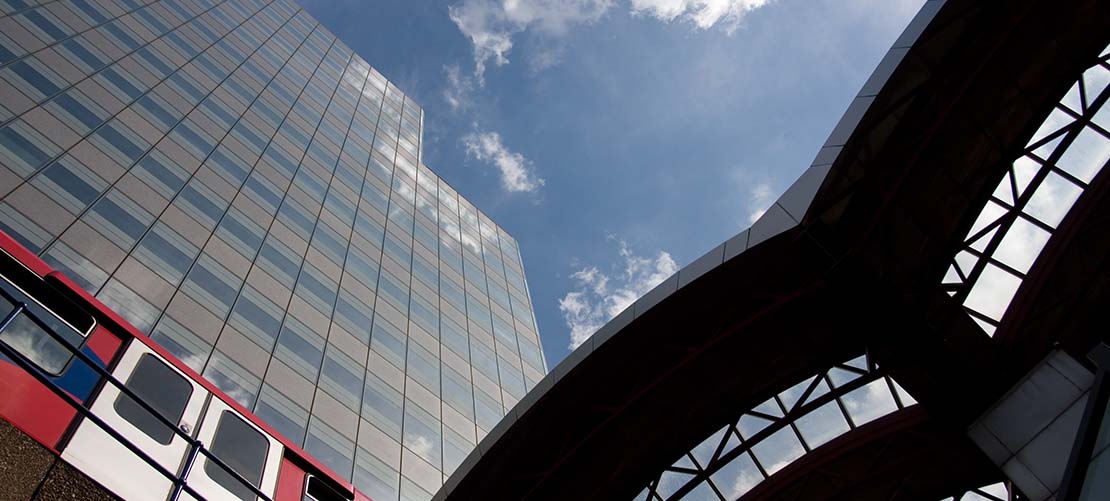Williams – the future?

Keith Williams has – finally – given the railway industry more of a flavour of what the future holds and what to expect as the outcome of the Williams Rail Review (the Review). More details are expected to be published in the coming weeks.
Speaking at the National Rail Recovery Conference 2021 alongside Rail Minister Chris Heaton-Harris, shadow Transport Secretary Jim McMahon OBE, Andy Bagnall, Director General of the Rail Delivery Group and Sir Peter Hendy CBE, Chair of Network Rail, more details emerged of his vision for the industry.
This briefing describes some of the key messages from the speakers:
- Response to the pandemic: The pandemic saw passenger numbers plummet to levels not seen since the 19th century, leading to the need for more government intervention in the railway and large levels of support. During the pandemic, timetabling of services became more dynamic and responsive to the needs of the country and extra measures were taken to ensure passengers could travel safely. These achievements need to be maintained going forward: we will not be able to go back to the "old normal".
- Lessons learned: Travel patterns will not go back to normal. The ticketing offer needs to evolve, with flexible season tickets becoming even more necessary than they were before. The revenue model for the railway could well be broken and this is now the time for fares reform. The industry has been challenged to keep the well-performing railway going when service levels increase: there is a need to entice people back to what is a safe railway, despite government messaging to the contrary during the pandemic. Whilst well-intentioned, the scare tactics have done little to generate trust in public transport.
- Urgency to complete reform process: The lasting changes in work and life patterns need to be addressed when the country starts to re-open and – perhaps unrealistically – the Rail Minister mooted the return to pre-Covid levels of patronage. No doubt, there is work to be done to attract people back to the railway, whilst recognising the fundamental shift that has happened. There is a need for a long term plan for the railway, taking into account matters such as sustainability to allow the best decisions to be made in the longer term. The Rail Minister noted the need for greater focus on the passenger, whilst still being cost conscious. Reform is critical to rebuilding the industry in the post-pandemic world.
- White Paper: The DfT is working towards a White Paper, although a publication date has not yet been confirmed. It has been delayed by Brexit, a General Election and then the pandemic. The Rail Minister believes decisive process has already been made through the Emergency Measures Agreements and Emergency Recovery Measures Agreements introduced during the pandemic. There is now a new – intended to be dynamic and flexible – National Rail Contract and the first of these are expected to be signed in the coming months. More news on the nature of the reforms can be expected in the coming weeks – the proposals have had to be revisited in light of circumstances.
- Reform: A wide range of bodies from across the industry have contributed to the Review – and in the last 9 months, the Review's initial proposals have been tested against what has happened during the dynamic. The balance between reform and the need to take into account taxpayer support and shorter term issues such as the pandemic had to be taken into account. The Review has not stood still. Short term efficiencies are going to be a key focus – this was something raised as part of the McNulty Review in 2011 but McNulty's aims have not been achieved since then.
- Impact of the pandemic: Referring to "black swan events" and their impact on transport, including rail, Williams noted that aviation has had many black swan events in the past 20 years: pandemics, terrorist incidents and natural events. The aviation industry has become more dynamic and competitive over the years asa result – and the aviation industry is likely to – eventually – come out of the pandemic better structured for the future. The rail industry has not had these kind of black swan events and was not structured or operated with these in mind. The pandemic is the first time this has happened for the rail industry – and the industry was not ready for declining passenger numbers, particularly in the numbers we have seen. Boards of companies will need much more clarity on the risk position going forward – we do not yet know future consumer behaviours. This may mean better incentives are needed which properly reward operators both for their investment and for increasing passenger numbers.
- What is the "new normal"?: This lockdown has been much more difficult for the country. People are fed up and struggling. It's unpleasant. There will be demand for returning to offices and we are ultimately social beings, so office working will come back in some form. This is optimistic for the industry. Even pre-pandemic, commuter numbers were falling, and there is an expectation that at least 80% of passengers will return in the next 3-4 years. Long distance travel is likely to recover more strongly and weekend travel has also seen stronger trends. The railway needs to be more dynamic and responsive – and this will make the railway more relevant and accessible for the future. Some consideration needs to be given to whether we should return to pre-pandemic service levels as more services result in the infrastructure not being able to operate reliably. It is possible that the future involves higher quality but lower frequency services.
- Hints to the future?: Williams' view is that the government needs to offer a strategic view for the industry, given the level of support it invests and the need to ensure value for money for the taxpayer. The DfT must provide that strategy, but it is not best placed to take decisions on the day to day operation of the railway, which are better placed closer to those who actually do the day-to-day work. Over the past 9 months alongside the Review, Network Rail and the DfT have been looking into cost efficiencies – both on a short and long term basis. Options to consider include ticketing methodologies – and reducing costs of ticket retailing, reducing fragmentation within the industry and workforce reform. Many of these opportunities were identified by McNulty and there is now a real need to deliver.
- Future structure: Williams believe that the industry has lacked accountability and responsibility and has been too fragmented to engender passenger trust. The DfT has a clear role to play in setting strategy and funding, ensuring delivery, as well as ensuring the conditions are there for investment. Appropriate levels of risk and reward for the private sector. There is a need to be more flexible, with concession-based contracts closer to customer needs, and the private sector needs to be incentivised to expand the revenue base. There needs to be an operational guiding mind which takes operational accountability and responsibility.
So what is the direction of travel? It seems clear that there will be a separation between strategy/funding and operation. An independent arm's length body, that holds infrastructure operators and train operators to account. DfT will continue to set the strategy. Operational functions currently undertaken by the DfT will need to be transferred to someone else. Network Rail has been suggested as the likely candidate but speakers were tight-lipped about whether this would be the case. Of course, for the infrastructure operator to be held to account, it should not be the infrastructure operator undertaking that role. Today has therefore set a direction of travel but not the destination.
Whilst we can expect a White Paper soon, legislation may well be needed to implement significant reform. With Parliament tied up at the moment, this may take time to deliver legal change, but the momentum needs to continue. We are starting to see some white smoke emerging and the next few weeks will be particularly interesting as the detail emerges.



